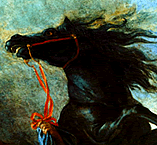|
|












 |
|

|
|
The Last of the Crusades
The Siege of Vienna
Stoye, John
Great Britain: Holt, Rinehart, and Winston, 1965
By Laurel Bradshaw
June 22, 2009
The Siege of Vienna by John Stoye the first of its kind. There are very few books published on the Siege of Vienna, and John Stoye was one of the first historians to research and capture the events of the Turkish siege. The purpose of this book is to recount the events of the Siege of Vienna in the English language. John Stoye was able to fill in a gap in history and thus complete the first published book on the Siege of Vienna in the English language.
The author discusses the events of the war in great detail. The first chapter describes the origins of the Ottoman attack. The leader of the Ottoman Turks, Kara Mustafa, and his military objectives are described in this chapter. The author discusses the major campaign of Mustafa and his ideas of capturing Hungary and the rest of central Europe. The main rival of the Turkish Army was king Leopold I, who ruled over Austria, Bohemia, Habsburg Hungary, and some German states and independent cities. The author discussed King Leopold and his reign during the second chapter, “Leopold I and the City of Vienna.”
In chapters three and four, the author describes “The Defense of Habsburg Interests in Europe and The Threat to the City of Vienna.” The events described include the advancement of the Turkish army towards Vienna. The Turkish army consisted of over 100,000 European, Asian, and African men. Unfortunately, the Commander-in-Chief of the Habsburg Army, Charles V of Lorraine, could muster only 33,000 men. Leopold was forced to flee the city and Vienna was put under siege on July 16, 1683.
The author describes the events that took place outside the city in the regions of Warsaw, Dresden, Berlin, and Regensburg. He describes the events that brought relief to the city of Vienna and the consequences of victory. The Turkish Army was defeated when Pope Innocent XI called for a Holy Christian Alliance to resist the Muslim uprising. King John Sobieski III of Poland led the Christian Army of about 40,000 men. Sobieski entered the city of Vienna on September 12 and defeated the Muslim army with the help of Bavaria, Franconia, Thuringia, and Saxony. It would be the last of the crusades, and Kara Mustafa would sue for an order of peace, which was signed at Karlowitz in 1699. Austria was the victor in the concessions, gaining Transylvania and most of Hungary.
The author demonstrated great organizational skills. In the back of the book he had a page dedicated to abbreviations and he also had notes to all of the pages. The author also had maps of the wars and pictures of the kings and commanders involved. The author also had excellent sources and he mentions in his preface that he was able to gather information from the Austrian State Archives in Vienna and the Bodleian Library. The author wrote this book from a very strict historical perspective. He was well detailed and thorough in his description of events surrounding the Siege of Vienna.
This book is an excellent resource for anyone wanting to discover more on the events surrounding the Siege of Vienna. I believe the author’s unbiased research is truly accurate. I enjoyed the author’s primary sources and the extensive research he put into the book. He is very structured in his writing style, and the book is presented in a format that is easy to read.

|
|